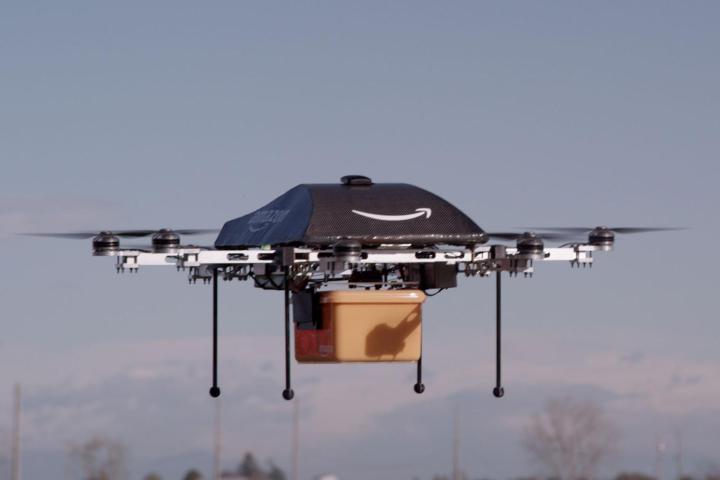
A drone testing ground may be coming to an area near you. The Federal Aviation Administration announced Monday the location of six sites where researchers will develop technology and safety standards for unmanned aerial systems (UAS), which will begin to share airspace with commercial airliners starting in 2015.
The FAA receive 25 applications from 24 states to host the UAS test sites. Of those, the agency chose the following: University of Alaska, the state of Nevada, New York’s Griffiss International Airport, North Dakota Department of Commerce, Texas A&M University, and Virginia Tech.
“In selecting the six test site operators, the FAA considered geography, climate, location of ground infrastructure, research needs, airspace use, safety, aviation experience, and risk,” wrote the FAA in an announcement. “In totality, these six test applications achieve cross-country geographic and climatic diversity and help the FAA meet its UAS research needs.”
Each test site will be responsible for the development of different areas of research, as the FAA explains in the descriptions below:
University of Alaska. The University of Alaska proposal contained a diverse set of test site range locations in seven climatic zones as well as geographic diversity with test site range locations in Hawaii and Oregon. The research plan includes the development of a set of standards for unmanned aircraft categories, state monitoring and navigation. Alaska also plans to work on safety standards for UAS operations.
State of Nevada. Nevada’s project objectives concentrate on UAS standards and operations as well as operator standards and certification requirements. The applicant’s research will also include a concentrated look at how air traffic control procedures will evolve with the introduction of UAS into the civil environment and how these aircraft will be integrated with NextGen. Nevada’s selection contributes to geographic and climatic diversity.
New York’s Griffiss International Airport. Griffiss International plans to work on developing test and evaluation as well as verification and validation processes under FAA safety oversight. The applicant also plans to focus its research on sense and avoid capabilities for UAS and its sites will aide in researching the complexities of integrating UAS into the congested, northeast airspace.
North Dakota Department of Commerce. North Dakota plans to develop UAS airworthiness essential data and validate high reliability link technology. This applicant will also conduct human factors research. North Dakota’s application was the only one to offer a test range in the Temperate (continental) climate zone and included a variety of different airspace which will benefit multiple users.
Texas A&M University – Corpus Christi. Texas A&M plans to develop system safety requirements for UAS vehicles and operations with a goal of protocols and procedures for airworthiness testing. The selection of Texas A&M contributes to geographic and climactic diversity.
Virginia Polytechnic Institute and State University (Virginia Tech). Virginia Tech plans to conduct UAS failure mode testing and identify and evaluate operational and technical risks areas. This proposal includes test site range locations in both Virginia and New Jersey.
Areas selected for testing are expected to be the first to reap the economic benefits of widespread UAS usage. According to the Association of Unmanned Vehicle Systems International (AUVSI), UAS will generate $13.7 billion in economic activity and create 70,000 jobs in the first three years of UAS integration (PDF). Between 2015 and 2025, AUVSI expects UAS to spur $82.1 billion in economic activity and create more than 100,000 jobs.
Under current law, the FAA allows users of small UAS to fly their crafts at altitudes lower than 400 feet, and they must remain within the operator’s line of sight. Several universities and 80 law enforcement agencies have received a so-called Certificate of Authority to fly larger drones for official purposes (like doing research, conducting surveillance, or making money). Only one commercial enterprise, energy giant ConocoPhillips, has received a Certificate of Authority thus far, and its area of operation is limited to the arctic region of Alaska.
Within the next two years, that will change. In November, the FAA released its “road map” for the integration of UAS into American airspace, which is slated to begin on September 30, 2015, as mandated by a law enacted in 2012. At that point, the FAA will begin to allow individuals and companies – Amazon and UPS, for example – to fly drones for commercial purposes on a large scale.
While the FAA says it plans to release rules for small UAS pilots next year, the agency plans to integrate larger UAS more slowly. The FAA expects as many as 7,500 commercial drones to occupy US airspace within the next five years.
To find out more about the drone testing sites, check out the FAA’s “Fact Sheet” here.
Editors' Recommendations
- This awesome drone station could be coming to a hospital near you
- Feds ban Chinese-made drones over spying fears. Could your drone be next?
- FAA proposes nationwide real-time tracking system for all drones
- Google’s Wing delivery drones will soon ship packages for FedEx and Walgreens
- NEC’s passenger drone takes to the skies in somewhat cautious test flight


